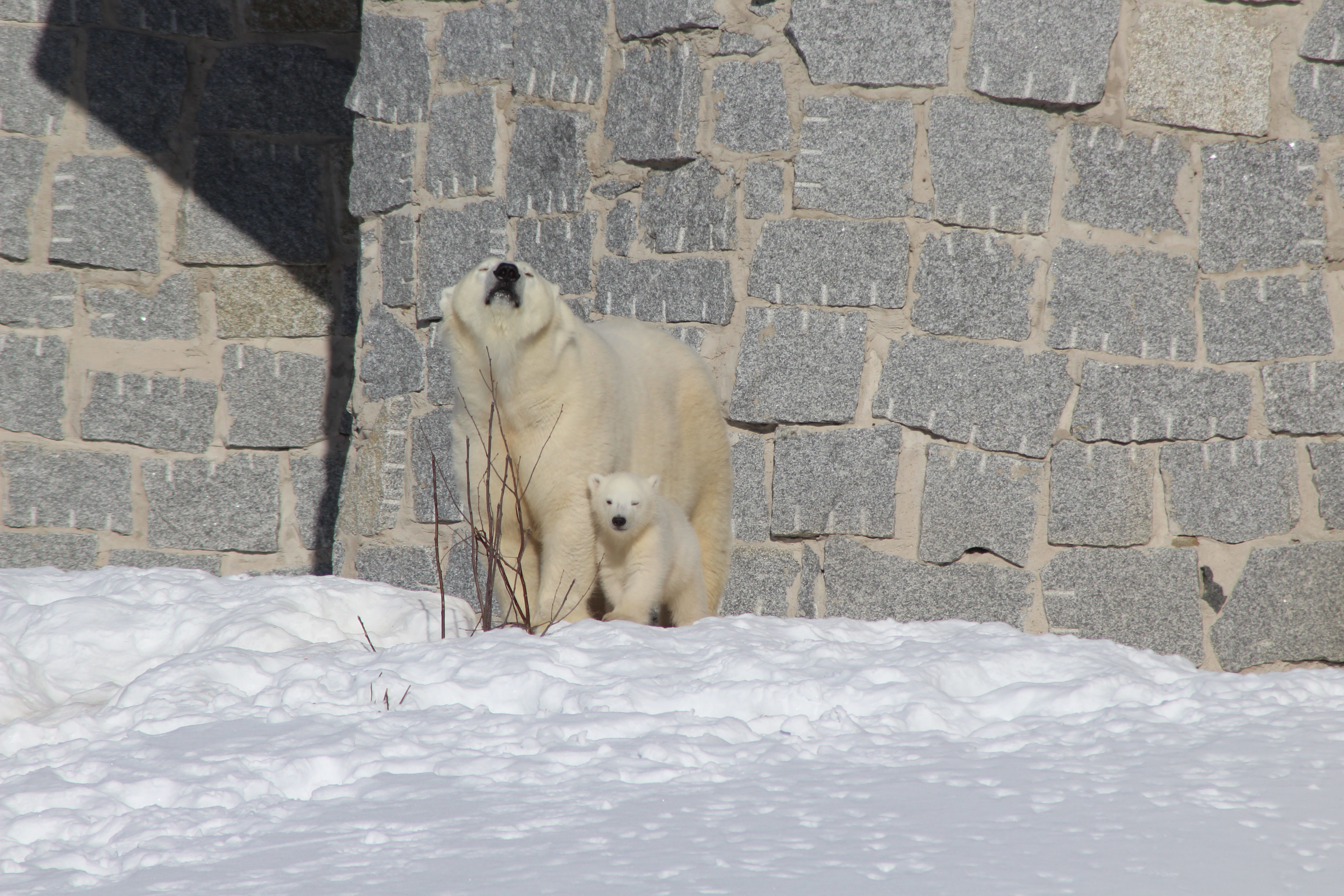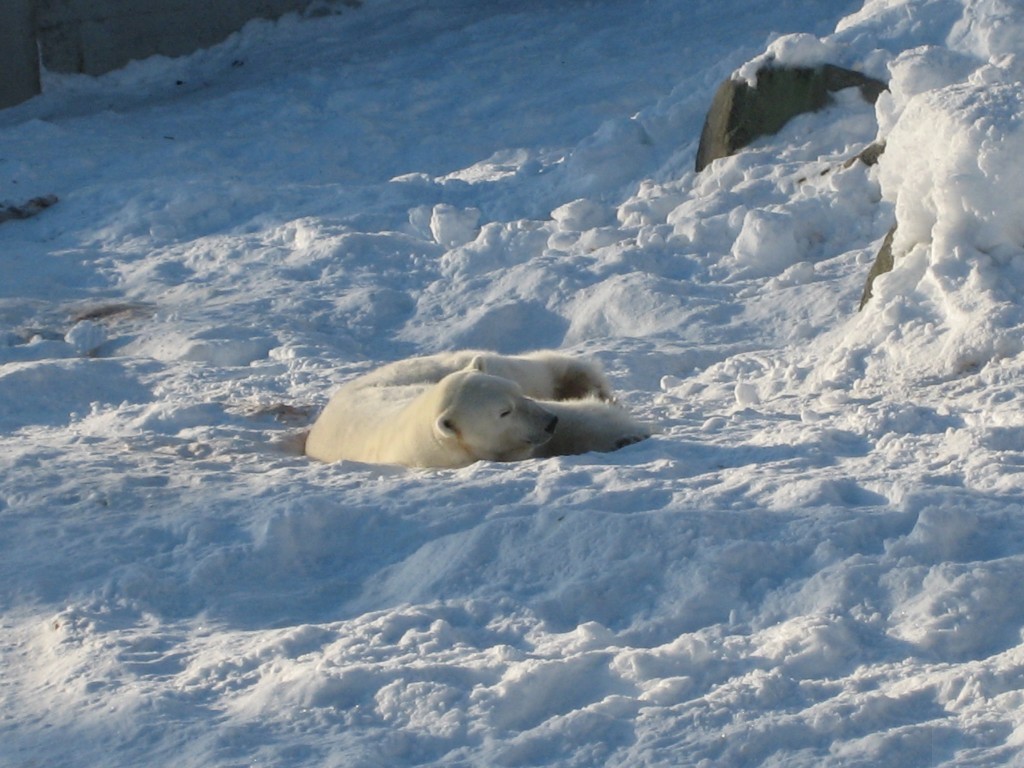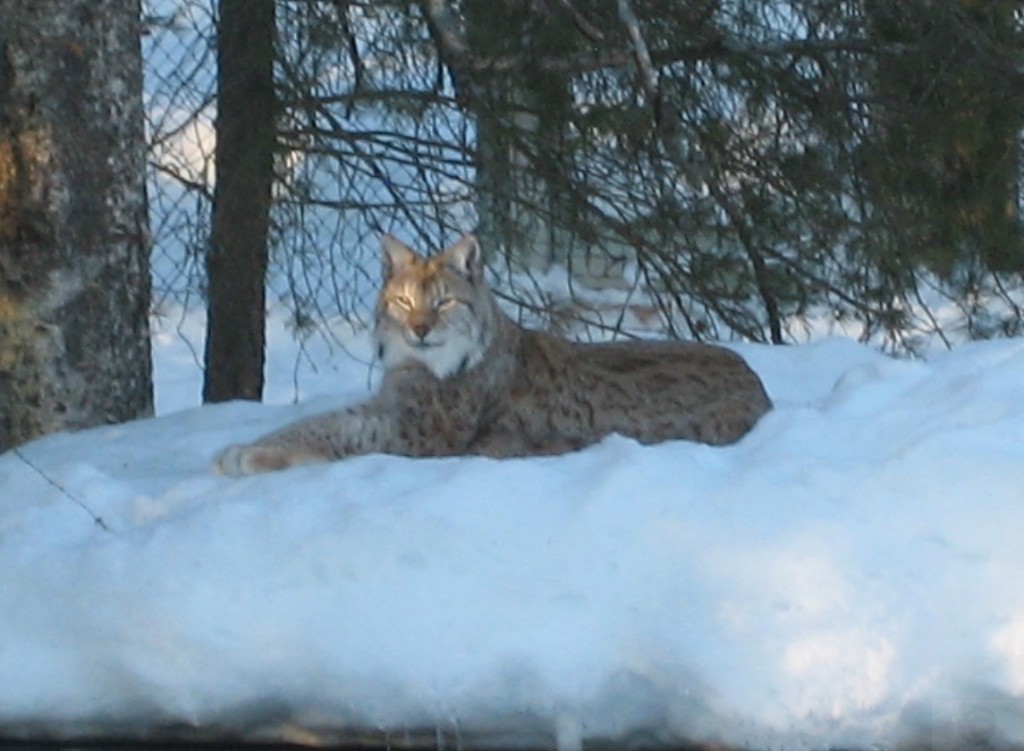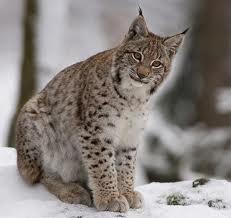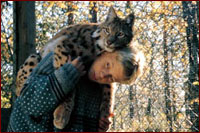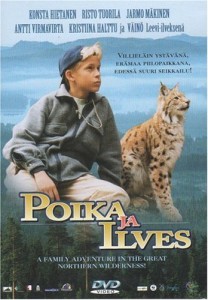I love the Lappish nature with lakes, swamps, rivers and forests, specially in winter time. And the animals of Lapland give me so much pleasure, both wild animals but also tame or half-tame animals. Readers of this blog have probably already noticed I also love to spend times in the Ranua zoo near Rovaniemi. I visit there several times a year and I never get disappointed. And so was this day’s (March 20th, 2017) visit also very successful.
Ranua zoo has a new and rare resident. A polar bear cub was born on November 25th 2016 and has spent about 3 months inside the den with its mother, Venus. And finally, last Monday, the door to the den was opened and the inhabitants could come out. I had the chance today, a week later, to visit the zoo.
At my arrival I could just see the back of Venus as she entered the den for a short feeding of the cub and their mid-day nap. So I went to see all the other animals first. When I returned to the cage of the female polar bear and her cub, they were still napping. But my waiting was rewarded as Venus suddenly put out her head and sniffed in the air to be sure there were no threats to the cub outside. After that the cub was also allowed to come out. And how adorable it was! It has no name yet. The zoo arrange a name competition for the male cub on the website and the name will be final in the end of the summer.
The father, Manasse, lives behind the wall and he was very interested in the smells that came from the other side through a crack in the wall. 
So far the cub will go without a name. When it was born, the cub weighed around half a kilogram, but now it is already 10 kilograms.
In the nature the male polar bears are a threat to the cubs. They could kill cubs just to get the female polar bear rutting again. When the female bear has a cub, and that could last for about 2 years, she is not the least interested in the male polar bear. That is why Venus all the time sniffed in the air to find out if there were any threating male bears nearby. The mother bear was looking out for the cub all the time they spent outside the den. There were not so many visitors watching their show today, but in the morning as I arrived there were several buses with visitors. And children from a kindergarden were singing out loud to wake up the polar bears. But that did not work and they went disappointed back to the kindergarden again without seeing the polar bear cub. I do hope they have the chance to come back one day.
The staff of the zoo are very proud of this newcomer, and for good reason, as it is extremely rare for a polar bear to reproduce in captivity. Special focus has been put on monitoring the wellbeing of mother bear Venus. She has now given birth to two polar bear cubs in Ranua zoo. Five years ago her cub Ranzo was born and brought around 150,000 visitors to the zoo. Ranzo lives in an Austrian zoo at the moment.
During this day’s visit the cup and its mother enjoyed the sunny weather and the snow in the cage. The cub wanted to play with the mother and jumped towards her several times. It was so sweet!
The Ranua wildlife park is open daily 10 am to 4 pm. You can stay in the park after closing time. Until 6 pm, if you want.
After the successful show at the polar bear place I also checked the other animals of the wildlife park. Next to the polar bears was the quiet place of the brown bears. That was quiet because the brownbears are still hibernating. They could wake up any day now, though.
Then comes the cage of the wolves. They were out walking in the snow and seemed very content with their lives. And so did the dholes, the wolverines and the lynxes. Especially the lynxes seemed to have the feelings of the spring in their hearts. It would be nice if they could have small lynx babies soon. The wildlife park is expecting a musk ox calf to be born later in the spring. Last year the first musk ox calf was born in the wildlife park. Ranua zoo is the only place in Finland where you can see musk oxes and last year’s calf was the first in 9,000 years to be born in the region of Ranua. The beavers also have small cubs at the moment. But they were all sleeping today during my visit.

